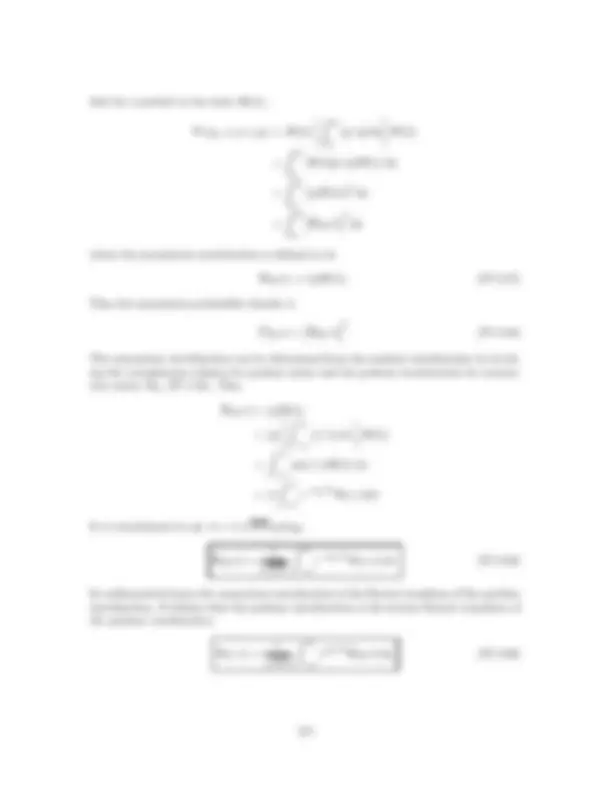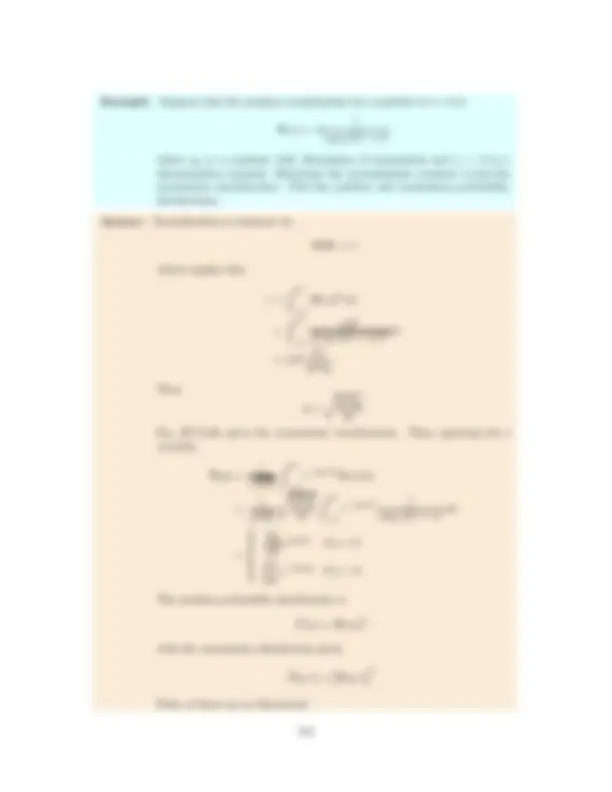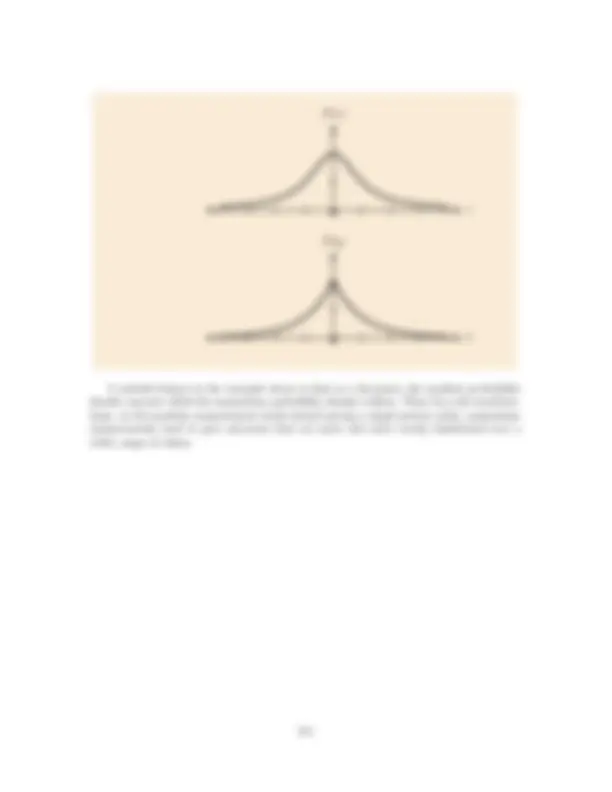





Study with the several resources on Docsity

Earn points by helping other students or get them with a premium plan


Prepare for your exams
Study with the several resources on Docsity

Earn points to download
Earn points by helping other students or get them with a premium plan
Community
Ask the community for help and clear up your study doubts
Discover the best universities in your country according to Docsity users
Free resources
Download our free guides on studying techniques, anxiety management strategies, and thesis advice from Docsity tutors
The concept of bound states in quantum mechanics, where the wavefunction for an energy eigenstate decays exponentially outside of an energy 'well' and the probability of locating the particle there is negligible. The document also derives the relationship between the position and momentum wavefunctions using the fourier transform. An example is provided to illustrate the concept.
Typology: Study notes
1 / 5

This page cannot be seen from the preview
Don't miss anything!




xa xb
x
xa xb
x
φE
Figure IV.4.12: A trial solution for an eigenstate where 0 < E < V 1 for a piecewise constant potential. The trial solution demonstrates the depen- dences of κ and the spatial frequency on the difference between the total and potential energy in each region and satisfies the matching conditions at xa. However, it does not satisfy the matching conditions at xb and is thus does not represent an energy eigenstate for this potential.
In such cases the matching conditions severely constrain the possible values of E; only certain very specific values will work. This leads to a discrete set of energy eigenvalues and energy eigenstates. This is quite general and typically if there is a region in which V is lower than for the surrounding regions, the set of energy eigenstates is discrete and often finite in number. On either side of this region, the wavefunction for energy eigenstates decays exponentially and the probability of locating it there is negligible compared to that of locating it within the energy “well.” Such states are called bound states. A wavefunction for such an eigenstate is illustrated in Fig. IV.4.13.
The position wavefunction Ψ(x, t) of a state |Ψ(t)〉 is a useful for describing position mea- surement outcomes via the position probability density
P (x, t) = |Ψ(x, t)|^2
xa xb
x
xa xb
x
φE
Figure IV.4.13: An eigenstate where 0 < E < V 1 for a piecewise constant potential. This demonstrates the dependences of κ and the spatial frequency on the difference between the total and potential energy in each region and satisfies the matching conditions at xa and xb.
which can be used in probability calculations to give
Pr (a 6 x 6 b) =
∫ (^) b
a
P (x, t)dx.
An equivalent momentum probability density, P˜ (p, t), which is possibly a very different type of function from the position probability density for the same state, would play the same role in determining the probability of momentum measurement outcomes via
Pr (pa 6 p 6 pb) =
∫ (^) pb
pa
P^ ˜ (p, t)dp.
The issue is to determine an expression for the momentum probability density by deter- mining a momentum wavefunction, Ψ(˜ p, t), and to provide a prescription for relating the position and momentum wavefunctions to each other. This is accomplished by considering
Example: Suppose that the position wavefunction for a particle at t = 0 is
Ψ(x) = A
(xp 0 /ℏ)^2 + a^2
where p 0 is a constant with dimensions of momentum and a > 0 is a dimensionless constant. Determine the normalization constant A and the momentum wavefunction. Plot the position and momentum probability distributions.
Answer: Normalization is attained via
〈Ψ|Ψ〉 = 1
which implies that
−∞
|Ψ(x)|^2 dx
−∞
((xp 0 /ℏ)^2 + a^2 )^2 dx
ℏπ 2 a^3 p 0
Thus A =
2 a^3 p 0 ℏπ
Eq. (IV.5.89) gives the momentum wavefunction. Thus, ignoring the t variable,
Ψ(˜ p) = √^1 2 πℏ
−∞
e−ipx/ℏ^ Ψ(x) dx
2 πℏ
2 a^3 p 0 ℏπ
−∞
e−ipx/ℏ^
(xp 0 /ℏ)^2 + a^2 dx
ℏπ ap 0 eap/p^0 if p < 0 ℏπ ap 0
e−ap/p^0 if p > 0.
The position probability distribution is
P (x) = |Ψ(x)|^2 ,
with the momentum distribution given
P˜ (p, t) =
∣ Ψ(˜ p, t)
2 .
Plots of these are as illustrated.
Answer:
x
P (x)
p
P^ ˜ (p)
A notable feature in the example above is that as a decreases, the position probability density narrows while the momentum probability density widens. Thus, for such wavefunc- tions, as the position measurement tends toward giving a single precise value, momentum measurements tend to give outcomes that are more and more evenly distributed over a wider range of values.